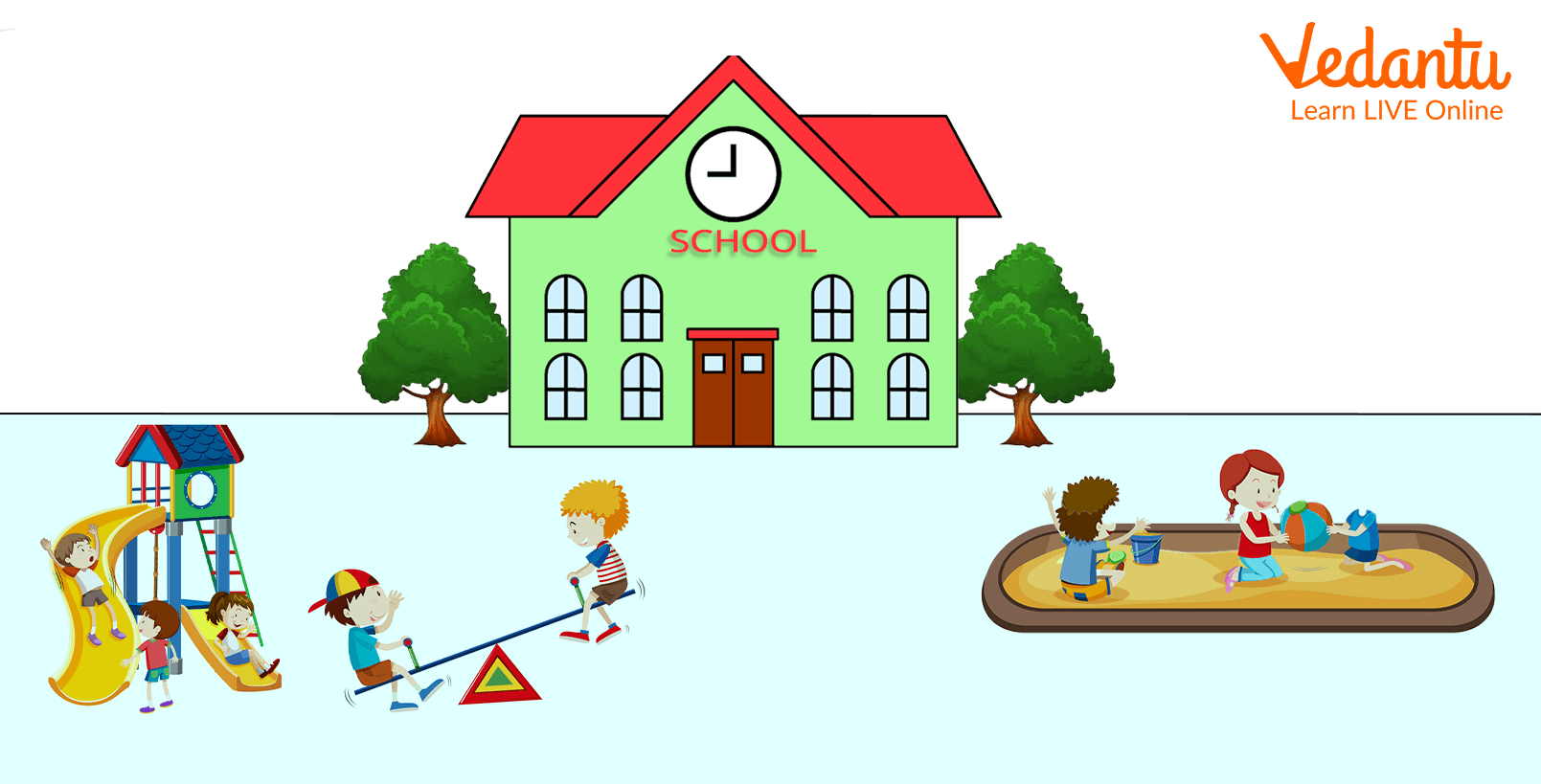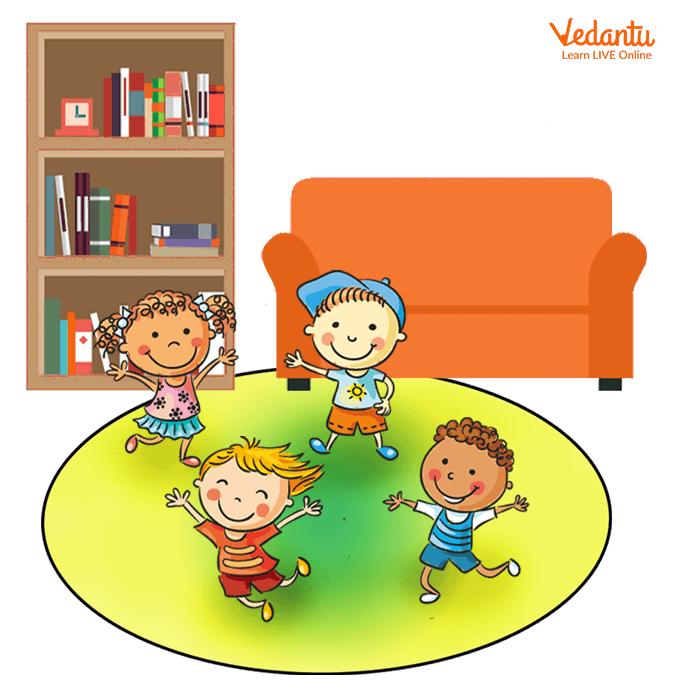




Top Icebreaker Games for Welcoming New Classmates
Now with the gradual vanishing of the pandemic, schools are reopened and the kids are overjoyed! Sitting at home idly, your kid must have grown lethargic with no fun at school. This does have an adverse effect on these young minds. Why not boost them up with some cool back-to-school games for kids to play at school?
Oho! What if some schools are not yet open in some places? Worry not, we got this covered as well. Towards the end, we also have some pretty cool games which are played at home. Enjoy the list!
Fun Way to Start/Restart Your First Day at School

Kids playing at school
You might be a parent or a teacher who is trying to infuse new games at school and home, or trying to greet new kids with these cool games or you might be a school student who is re-starting your school after the pandemic – all are welcome to this content!
The purpose of this discussion is to give a list of games that will be engaging for the kids and will recharge the kids from their boredom.
6 Awesome Back to School Games
We are going to list down 6 amazing games for the kids to play at school. Let us first check the necessities of the games.
Checklist before the game starts:
A classroom full of kids.
A couple of self-adjustments to adjust to your respective surroundings.
A colourful ball for the first game.
A simple board for each kid in the 4th game.
A roller dice for the 5th game.
Below is the list of 6 awesome games.
1. Roll The Ball and Get to Know
In this game, you have to prepare a bunch of questions and write them on a sticky note and stick it to a colourful big ball. Each kid after their turn will roll the ball and send it to other kids. They will answer the two questions from the sticky notes pasted on the ball.
This will help the kids to know more about their friends and they will gradually be free to communicate with each other.
2. Talk of The Town
In this game, each kid will go up on an elevated region like a stage or simply on a chair and he or she will introduce themselves in a fashionable manner. This will boost their confidence level.
3. Pick a Stick and Create a Story
In this game, the kids will start saying a very short story in 3-4 lines, it can also be a phrase or moral. The next kid will have to pick a word from the previous teller and need to create his or her story. This will help them to be imaginative and confident.
4. Get to Know You
This is a board game. In this game, the kids are required to write on a piece of the board about themselves or what they aspire to become, or anything which they want to write. Then these boards can be hung in the classroom with their respective names on them.
This will improve their writing skills and also give them a sense of recognition.
5. Dice up
This is a dice game where the teacher will roll the dice and wherever the dice lands the kid next to it will recite a poem or dance or simply rhyme any nursery rhymes.
6. Snowball Fight
In this game, the kids can roll up waste papers and throw them at each other. This is a lot funnier than just throwing papers at each other. This will help them get comfortable on the first day at school.
Back to School – Home Games

Kids playing at home
When your kid is away from school, you can lighten them up with some cool games which can be played at home. These games can be played virtually while they do online classes. The games will keep the young minds active and not feel lethargic.
Alphabet Relay
When your kid is at the kindergarten level, you can definitely play this helpful game. This game will engage your child to identify different letters from the English alphabet.
Back to School Journey
This game is to be played by the kids when they come back from school. You can ask them to relate their day’s activities in school.
Scavenger Hunt
In this game, the school can send goodies or small stationeries for the kids and print the logo of the school. The parents will hide these goodies all over the house hiding them. The kids will be asked to find the goodies. This will be a great game for them!
As we come to the end of the content, we would like to make sure that this was only a fun guide to help you and your kids to add some fun activities in life. The content is intended especially for the kids after the pandemic situation, how they can grow their will to go back to school or those who are still at home or how they can eliminate boredom and enjoy home-schooling. Also, as an awareness, let us end this by saying that at school make sure the kids are maintaining cleanliness and hygiene, wearing masks, and sanitizing themselves regularly.
FAQs on Back to School Games That Make Learning Fun and Social
1. What are some easy and fun back-to-school games to help students get to know each other?
There are many simple games that work great as icebreakers on the first few days of school. The goal is to make everyone feel comfortable. Some popular choices include:
- Two Truths and a Lie: Each student shares three 'facts' about themselves, and the class guesses which one is the lie.
- Classmate Bingo: Create bingo cards with descriptions like "Find someone who has a pet dog" or "Find someone who loves drawing." Students walk around asking classmates to sign the squares that apply to them.
- Would You Rather: Ask fun, simple questions (e.g., "Would you rather have the power to fly or be invisible?") and have students move to different sides of the room to show their choice.
2. What is the main purpose of using these games and activities at the start of a new school year?
The primary purpose is to build a positive and safe classroom community. These activities help reduce the anxiety and nervousness many students feel when returning to school. They encourage interaction, help students and teachers learn names and personalities, and set a friendly, collaborative tone for the entire academic year.
3. How do back-to-school games help students who might be shy or nervous?
These activities are especially helpful for shy students because they provide a structured and low-pressure way to participate. Instead of having to start a conversation on their own, the game gives them a clear role and purpose. Simple, fun tasks allow them to interact, share something small about themselves, and build confidence without feeling put on the spot.
4. What’s the difference between an 'icebreaker' and a 'team-building' activity in the classroom?
While both are important, they have different goals. An icebreaker is designed to help students get to know each other on a surface level, like learning names or fun facts. A team-building activity, on the other hand, requires students to work together to solve a problem or achieve a common goal, which helps develop collaboration and communication skills.
5. Are there any quick activities for the last 5 minutes of class?
Yes, several quick games can be used to fill the last few minutes productively. A great one is Word Association, where you give a starting word and each student quickly says a word related to the previous one. Another is Silent Line-Up, where you ask students to arrange themselves in order of their birthday or height without talking.
6. Beyond just being fun, what academic skills can these activities help develop?
Many back-to-school games subtly build important academic and life skills. For example, they can improve active listening when students have to remember facts about classmates. They also enhance communication skills, encourage creative thinking, and promote problem-solving, all of which are crucial for success in any subject.
7. What are some good back-to-school activity ideas for older students in middle or high school?
For older students, activities should be a bit more thought-provoking. Instead of simple introductions, you can try games that encourage discussion and critical thinking. Good examples include Human Knot, where a group must untangle themselves, or Desert Island Dilemma, where students must debate and agree on which few items to bring to a deserted island. These promote teamwork and reasoning skills.



































